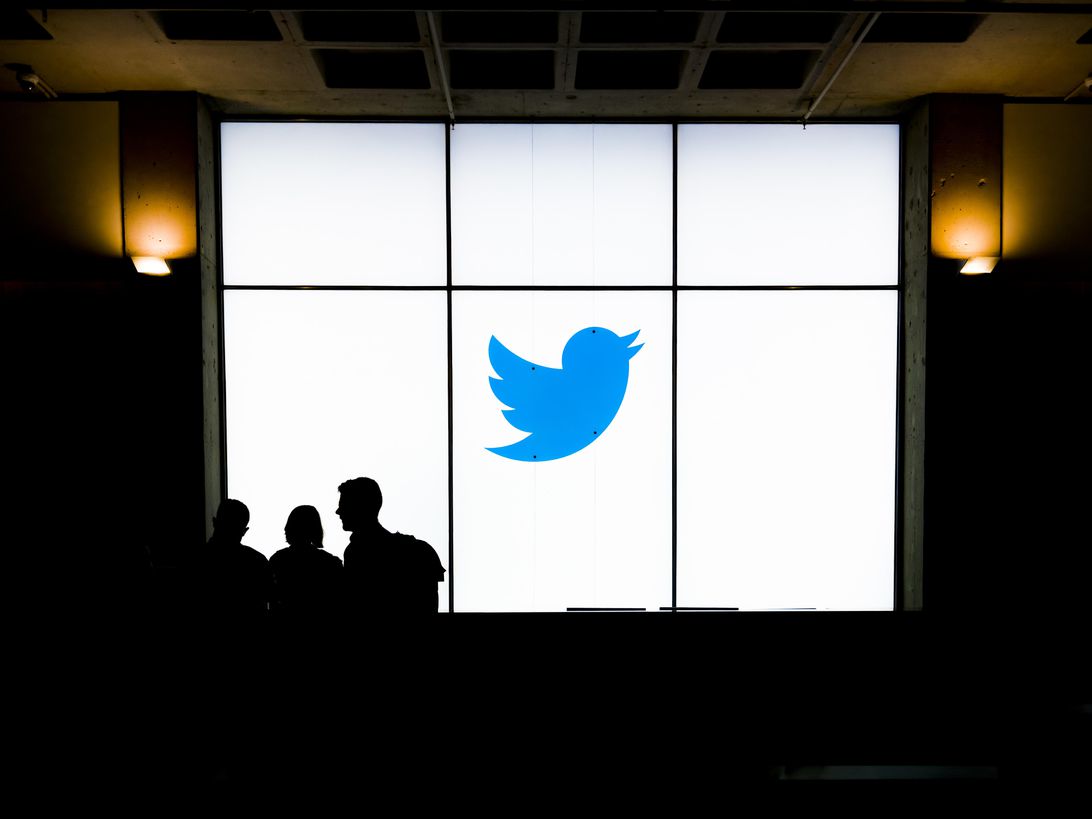Technologies
Trump’s tweets blocked for election misinformation still spread to other sites
The same messages popped up on Facebook, Instagram and Reddit, NYU researchers found.

Twitter blocked users from retweeting, liking and replying to some of former US President Donald Trump’s tweets because the posts contained election misinformation, but that didn’t stop the politician’s messages from spreading to other social media platforms.
NYU researchers analyzed tweets from Trump that Twitter flagged for misinformation between Nov. 1, 2020, and Jan. 8, 2021. They also identified public posts on Facebook, Instagram and Reddit that contained the same messages as the Trump tweets. Though limiting engagement with Trump’s tweets did curb their spread on Twitter, the same messages were posted more often on Facebook, Instagram and Reddit than tweets that just included a warning label or weren’t restricted, researchers found. Trump’s tweets appeared on other social media platforms in the form of links, quotes or screenshots.
Tweets from Trump that Twitter merely labeled for containing false claims about election fraud also received more user engagement than tweets without warning labels.
Researchers stopped short of concluding that labeling misinformation doesn’t work, because Trump’s unfounded claims about election fraud may be the types of tweets that could’ve spread widely even if the platform didn’t flag them.
The findings, though, highlight some of the limitations of content moderation, especially when moderation isn’t consistent across other social media platforms. Researchers pointed out that people might’ve just turned to other social networks as an alternative to Twitter or posted Trump’s false claims on other sites in protest. Since the 2020 US presidential election, Twitter and Facebook have labeled other content, including COVID-19 misinformation.
«The interconnected nature of these platforms and the online social media environment presents challenges for content moderation, where the policies are chosen and enforced by individual platforms without coordination with other platforms,» said a research article published Tuesday in the Harvard Kennedy Misinformation Review.
Though many social networks say they want to curb the spread of misinformation, they have differences in how they moderate content. Following the deadly Jan. 6 Capitol Hill riot, Twitter permanently banned Trump from its platform out of concern that his remarks could incite more violence. Facebook suspended Trump and later asked its content oversight board to review the suspension. Then it decided to bar him from the platform until at least January 2023. In July, Trump sued Facebook, Twitter and Google, accusing the companies of violating the First Amendment, even though its free speech protections apply only to the government censoring speech and don’t mean private companies can’t decide what types of speech they allow on their platforms.
A Twitter spokeswoman said Wednesday that as conversations about the 2020 election increased, Twitter thought it was «critical» to take «swift enforcement action on misleading content that could contribute to offline harm.»
«We continue to research, question, and alter features that could incentivize or encourage behaviors on Twitter that negatively affect the health of the conversation online or could lead to offline harm,» the spokeswoman said in a statement.
From November 2020 to January 2021, Twitter added a label to 303 of Trump’s tweets about politics. It restricted engagement on 16 of Trump’s tweets. During that period, Trump’s account posted 830 tweets about politics that didn’t get flagged, according to the research.
Technologies
Repair Your Electronics at Home With This Rare Black Friday Discount on the iFixit Pro Tech Go Toolkit
This toolkit rarely goes on sale, so take advantage of this opportunity to snag it for only $40.

While Black Friday is an excellent time to replace old smartphones or broken laptops at a discount, not everyone is looking to splurge on new tech right now. If you’re shopping on a budget, or simply like the devices that you have and aren’t ready for an upgrade, investing in an electronics repair kit may be a wise option. We’ve spotted a discount on the iFixit Pro Tech Go tech toolkit, bringing its price down to just $40. But don’t delay, Black Friday is in its final hours and this kit rarely goes on sale.
The iFixit Pro Tech Go kit can be used to open up and repair a wide range of electronics, including smartphones, laptops, gaming consoles, and smart home devices for DIY repairs like battery or screen replacements. The kit has a 32-bit Moray driver kit, an opening tool, a suction handle, a jimmy, a spudger and angled tweezer to carefully open your devices.
Don’t miss any of our unbiased tech content and lab-based reviews. Add CNET as a preferred Google source.
Repairing your own tech can save you hundreds or even thousands of dollars. It also reduces e-waste by helping your devices last longer rather than throwing them away over minor issue. As of this year, all 50 states have introduced right-to-repair legislation designed to give people a legal right to fix their own tech, and several states have already signed it into law.
You can check out more deals from iFixIt now on Amazon. Plus, for other budget buys, check out our roundup of the best Black Friday deals under $100.
MOBILE DEALS OF THE WEEK
-
$749 (save $250)
-
$475 (save $175)
-
$499 (save $300)
-
$900 (save $400)
Why this deal matters
This is a record low price on a repair kit that rarely goes on sale. While we did see a modest discount on the iFixit Pro Tech Go toolkit during Amazon Prime Day in July, it was not marked down for October Prime Day or other sales such as Memorial Day or Labor Day. As such, it’s fairly unlikely that we’ll see it go on sale again this season, so this might be your last chance to get the toolkit for only $40.
Join Our Daily Deals Text Group!
Get hand-picked deals from CNET shopping experts straight to your phone.
By signing up, you confirm you are 16+ and agree to receive recurring marketing messages at the phone number provided. Consent is not a condition of purchase. Reply STOP to unsubscribe. Msg & data rates may apply. View our Privacy Policy and Terms of Use.
Technologies
Don’t Say Goodbye to Black Friday Yet. These Rare Apple Discounts Are Still Going Strong
Technologies
What a Ban Would Actually Mean for DJI Drone Owners and Holiday Shoppers
What’s the secret to a very un-merry shopping season? A brand new, unusable drone.

With Thanksgiving wrapped up and the Black Friday shopping sales here, if a DJI drone is on your holiday wish list, you might want to hit «buy» immediately. The company has issued a stark warning: Its drones could be banned from sale in the US, and the deadline is looming.
The Federal Communications Commission voted 3-0 at the end of October to «close loopholes» that allow tech deemed a «national security risk» to be sold in the US. In plain English, the US government is clearing the path to give DJI the same treatment it gave Chinese phone-maker Huawei, effectively banning its products from the American market.
The US government has deemed DJI, which is based in China, a security risk. It’s also considering a separate ban on TP-Link routers.
DJI is already sounding the alarm, posting on Instagram that a «deadline that could decide DJI’s fate in the US is just 43 days away» (now 19 days away). The company is warning that without an audit, its products could face an «automatic ban.» The US government has long labeled the Chinese drone maker a security risk, and it looks like the hammer might finally be coming down right before the holidays.
Don’t miss any of our unbiased tech content and lab-based reviews. Add CNET as a preferred Google source.
The vote isn’t the end of the road, however. Future bans would need to target specific products and would require a period of public consultation. But it appears the groundwork is being set for the FCC to block sales of future and some existing DJI drones from US shores, as well as products that use DJI technology.
The government has called for a DJI audit by the end of the year, but if that doesn’t happen, DJI drone products could be banned for sale by default under a national security law.
DJI asks for a security audit before any ban
A representative for DJI told CNET that while the FCC vote references a rule change that doesn’t currently apply to DJI specifically, the National Defense Authorization Act deadline in December would put Chinese companies like it on the FCC’s ban list, «without any evidence of wrongdoing or the right to appeal.»
Adam Welsh, head of global policy at DJI, said the company has repeatedly said it would be open to audit, but that «more than 10 months have now passed with no sign that the process has begun.»
«The US government has every right to strengthen national security measures, but this must go hand in hand with due process, fairness, and transparency,» Welsh said.
Welsh said DJI is urging the government to start the audit process or grant an extension.
Will DJI drone owners need to give them up?
Because the ban would apply to new sales, not drones that have already been sold, a DJI drone you already own would still be legal to use — at least under current rules.
Government agencies, however, are prohibited from purchasing or using drones from Chinese companies, including DJI.
DJI’s drones consistently rank high in their product category. In January, they dominated CNET’s list of best drones for 2025. But some of the company’s newest products, such as the DJI Mavic 4 Pro, haven’t been available for sale in the United States.
Even DJI products that are not yet banned may be hard to find. The website UAV Coach has posted a guide to the bans and reports that, due to inventory issues, most DJI drone models are sold out at retailers regardless of future FCC action.
-

 Technologies3 года ago
Technologies3 года agoTech Companies Need to Be Held Accountable for Security, Experts Say
-

 Technologies3 года ago
Technologies3 года agoBest Handheld Game Console in 2023
-

 Technologies3 года ago
Technologies3 года agoTighten Up Your VR Game With the Best Head Straps for Quest 2
-

 Technologies4 года ago
Technologies4 года agoBlack Friday 2021: The best deals on TVs, headphones, kitchenware, and more
-

 Technologies4 года ago
Technologies4 года agoVerum, Wickr and Threema: next generation secured messengers
-

 Technologies4 года ago
Technologies4 года agoGoogle to require vaccinations as Silicon Valley rethinks return-to-office policies
-

 Technologies4 года ago
Technologies4 года agoOlivia Harlan Dekker for Verum Messenger
-

 Technologies4 года ago
Technologies4 года agoiPhone 13 event: How to watch Apple’s big announcement tomorrow
